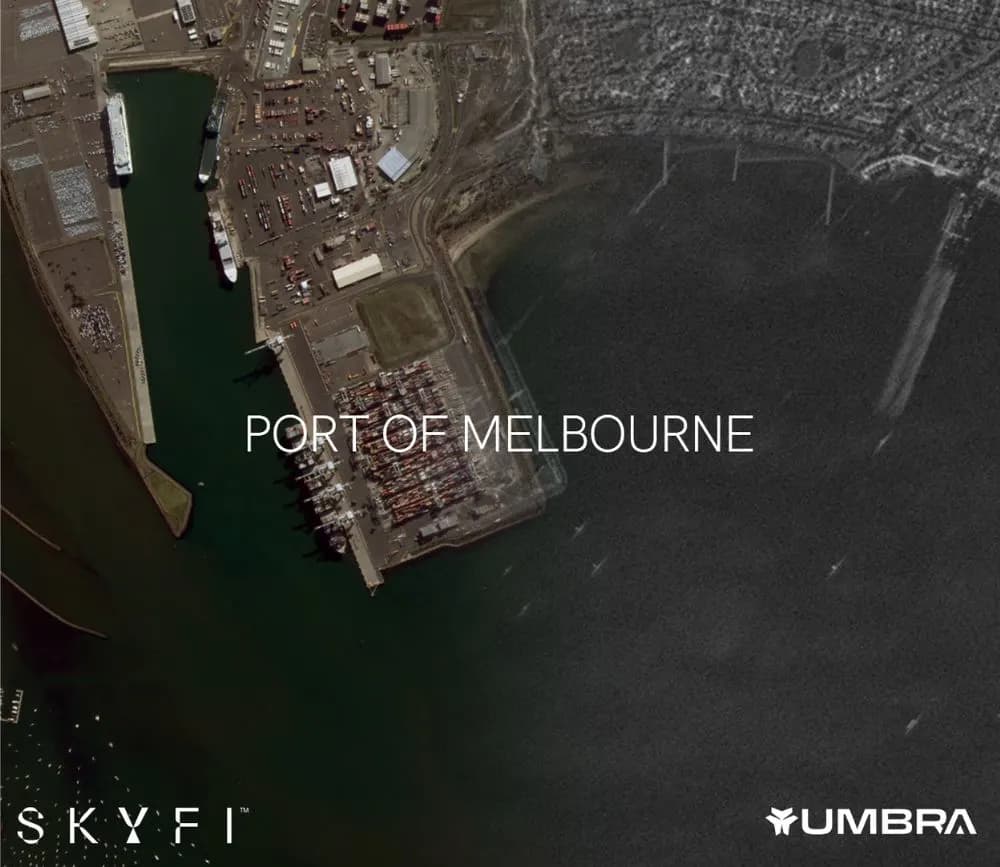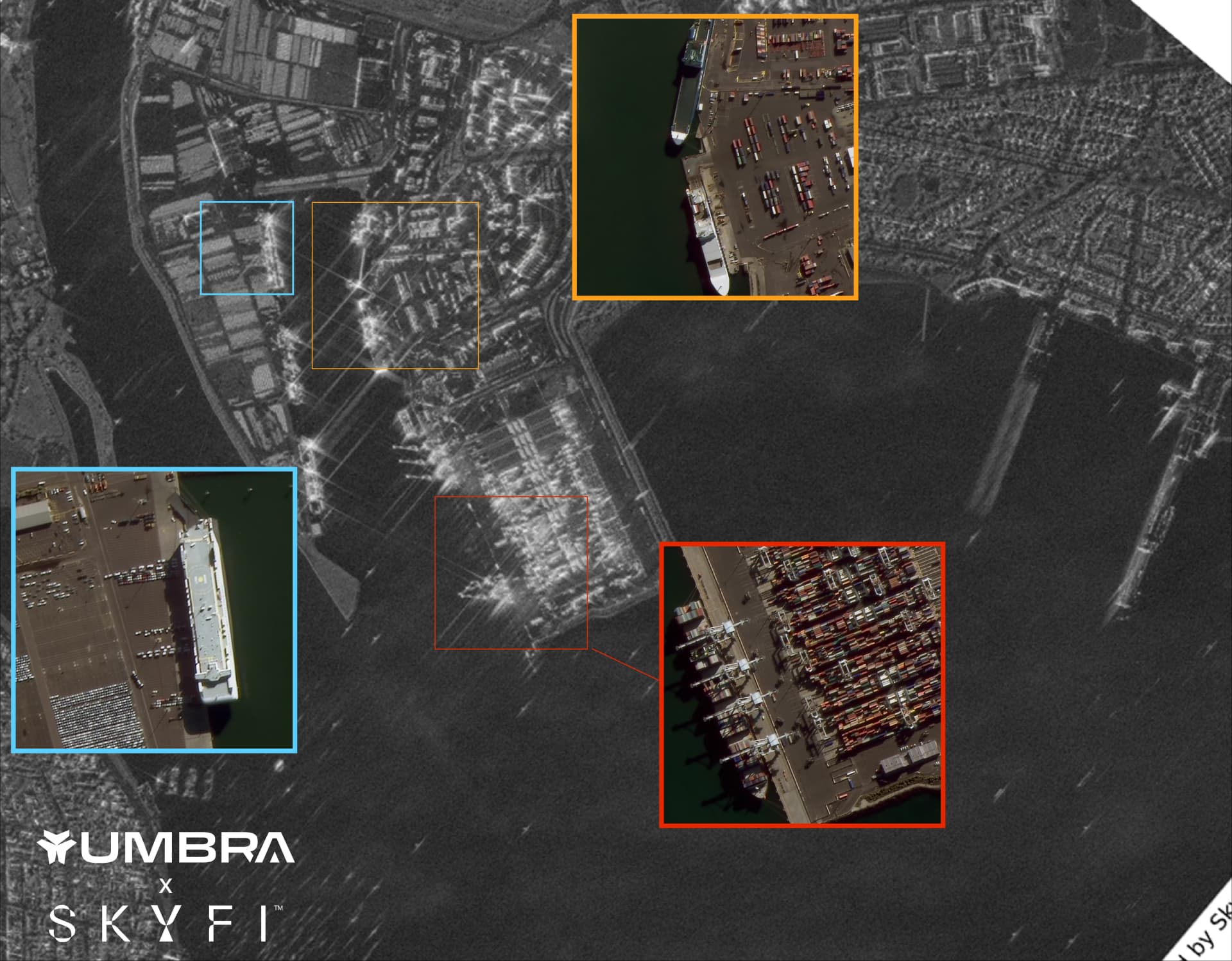
SAR: Changing the Way We See Ports, Maritime Trade, and Global Logistics
At SkyFi, we are actively utilizing the advanced capabilities of Synthetic Aperture Radar (SAR) technology. This involves directly tasking SAR satellites for specific areas of interest and accessing a comprehensive archive of SAR imagery through our partnership with Umbra.
When synthetic aperture radar is available through the SkyFi web or mobile app, you know the future is here. Synthetic Aperture Radar (SAR) technology is a groundbreaking tool reshaping how we monitor real-time events. Here at SkyFi, we're passionate about making geospatial information accessible and understandable for everyone. While SAR tasking has been available through the SkyFi platform for months, our recent integration of open and archive data makes UMBRA's data more accessible than ever.
Today, we take a look at SAR's capabilities by monitoring the Port of Melbourne, Australia's largest cargo and container hub.
Continuous Monitoring: SAR's Advantage
Unlike traditional optical imagery, SAR operates independently of weather conditions and daylight. This unique ability ensures consistent, reliable data collection, crucial for ongoing maritime surveillance, or any surveillance initiative for that matter. Over the past three months, we've tapped into open SAR data from Umbra, available on the SkyFi platform, to observe the bustling activity at the Port of Melbourne.

Why use SAR to monitor the Port of Melbourne?
The SAR imagery vividly captures the dynamic movement of vessels, including a nearby cruise line. This continuous stream of data is invaluable for various stakeholders:
Traffic Analysis: By tracking vessel movements, SAR helps in identifying traffic patterns and potential bottlenecks, fostering more efficient port operations.
Enhanced Security: SAR's eagle-eye view assists in spotting unauthorized activities, bolstering security and emergency response strategies.
Environmental Oversight: The technology is adept at detecting issues like oil spills, aiding environmental conservation efforts.
Who Benefits from SAR Data?
Though this use case is focused on maritime efforts, synthetic aperture radar serves a broad spectrum of users, including energy traders, port authorities, government agencies, environmental organizations, and defense sectors. As companies like Umbra and SkyFi make the data more accessible, we are seeing new markets access the data for a variety of new use cases.
Shedding Light on 'Dark Ships'
An intriguing application of SAR is in tracking 'dark ships' – vessels that don't transmit Automatic Identification System (AIS) signals, often linked to illicit activities. Our partner, SynMax, specializes in identifying, labeling and tracking dark ships using a variety of sensors. By comparing SAR and AIS data, these covert operations can no longer hide, enhancing maritime law enforcement.
A New Era in Maritime Monitoring
SAR technology stands as a beacon of innovation in maritime monitoring. Its capacity for continuous, weather-proof surveillance offers a new perspective in understanding and managing the complex dynamics of bustling ports like Melbourne. As we continue to explore and share the wonders of geospatial data, SkyFi remains committed to delivering insights that are not just powerful but also easily comprehensible to all.